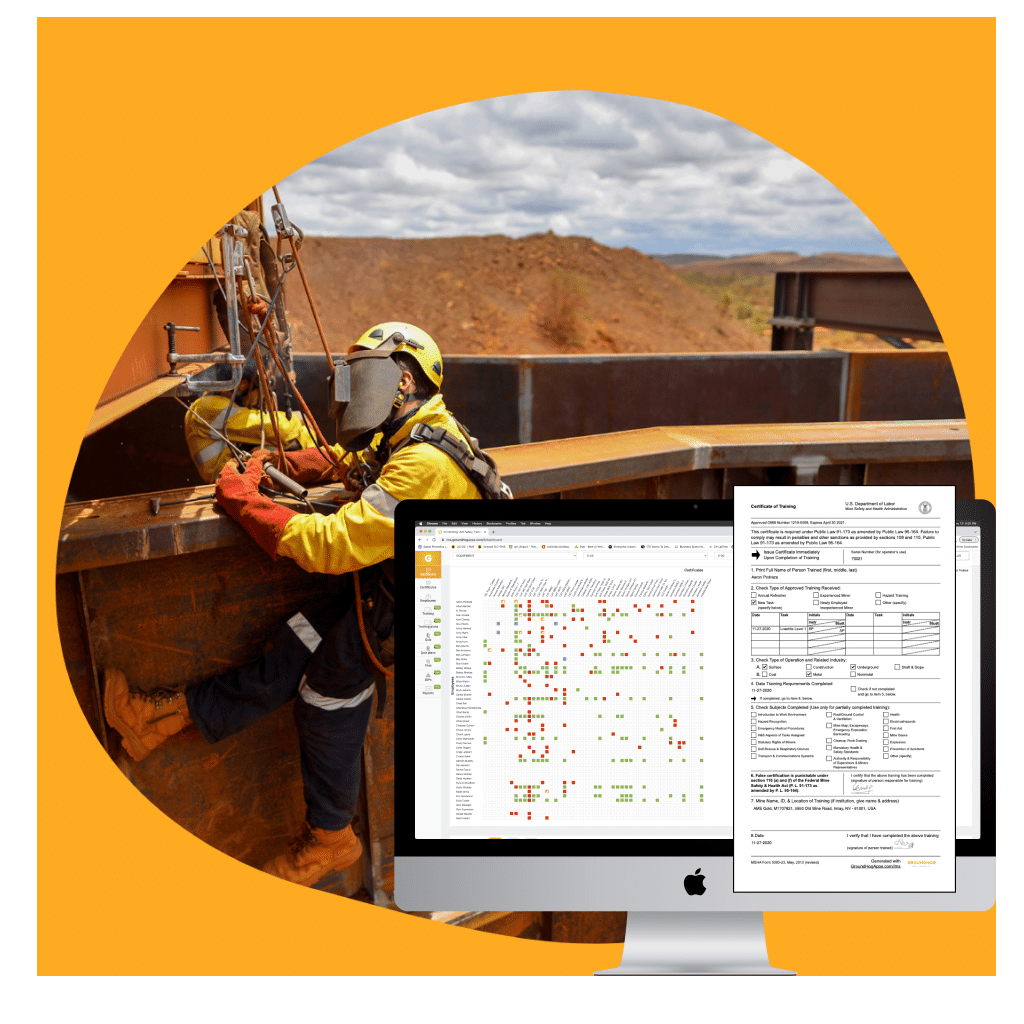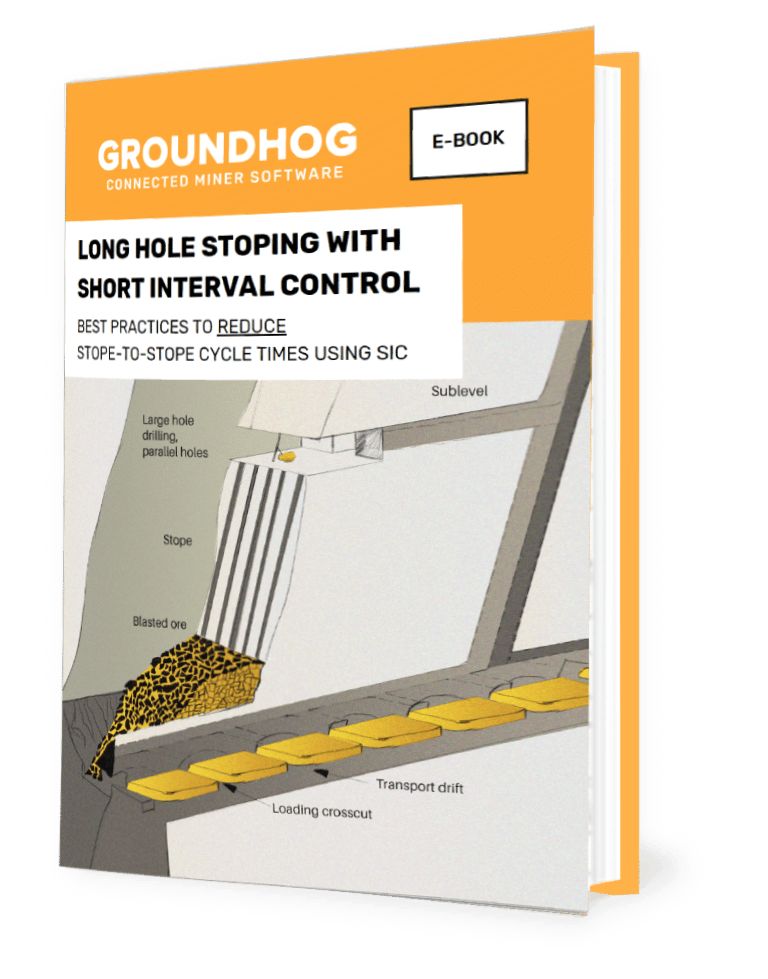Safety Training for a miner on how to operate a piece of equipment, or on the correct procedure for completing a task, not only leads to a safer operation, but to a more productive one as well. This is because safety and production go hand in hand. If you have employees who are taking shortcuts when it comes to safety and training, they are almost certainly doing the same with their job. One of the biggest areas where shortcuts are taken is when it comes to training. With many companies today having high turnover rates and struggling to retain quality employees, quality training is a must. There are two major headwinds when it comes to training. The first being the reluctance of a trainer to put their name down and sign someone off on a government training document, like a MSHA 5000-23. The second is ensuring that when the training is being conducted, it is consistent across the company and is in line with the company’s policies and procedures. If you want to have quality training, you need to build a quality training system.

A Safety Training System for mines should contain Training Plans
A training system should be comprised of documents (called training plans) that lay out exactly what a trainee must know, combined with hands-on training supervised by an experienced employee. The first step in this process is to build the training plans which are a map of how the training should be done. To do this, a decision must be made on what training subjects will be covered for each piece of equipment or task. For example, if a training plan is being built for a mobile piece of equipment, it should cover everything associated with operating it. From inspecting the equipment before use, to driving it, to how to lock it out during maintenance. Establishing the subjects that are required for each training plan also means that the training can be standardized and consistent. This way everyone receives the same information regardless of who does the training, and more importantly who trained the trainer.
A Safety Training System for Mines should have Written Procedures
Once the subjects are decided upon, each one needs to have a written procedure (SOP, JSA, SWP, etc.) that lays out exactly how the company expects that task to be done. And just like anytime something is being built, the most important step is to build a solid foundation. In this case, the foundation is made up of good detailed written procedures. It is critical to have written procedures with as much useful information as possible. They also need to lay out the way the company expects that equipment to be operated or that task to be completed. So, for example, when building a training plan for a water truck there should be a written procedure for inspecting the water truck that explains what needs to be checked every shift and what puts the water truck out of service. There should be a procedure for driving the water truck, explaining everything from shifting gears to when to lock in axles and/or differentials. All these written procedures need to have an initial review by the safety team, operations, and mechanical support services and going forward they need periodical reviews to ensure that they contain the correct and most up to date information.
A Safety Training System for Mines should have Quizzes
It is also very helpful to embed quizzes in the training plans to ensure that the person being signed off understands the important information and/or policies. “Pencil whipping” training can still happen even in a system with multiple sign offs. Having a simple multiple choice quiz asking questions about important knowledge that must be known (for example, in the case of a water truck how much slack is allowed in a slack adjustor or how much air pressure can be lost in a minute) helps ensure that the person being trained really knows the procedures.
A Safety Training System for Mines should enable Safety Trainers to perform Observations (Verification of Competencies)
Once the procedures are written, reviewed and the training plans are built, there needs to be a way to verify that the training has been completed. A good system is one that is made up of task observations and signatures. The best practice is to have signatures for each subject. So, in the case of a water truck, one signature for the employee being trained stating that he/she understands that specific task (inspecting the water truck, driving, etc.) and has safely completed it. And then one signature from a competent observer stating that he/she watched the employee complete the task, and that the employee completed the task safely and followed the procedures. It’s best if these observations are done as the employee goes about their normal work duties. In other words, the individual tasks shouldn’t be staged just for the sake of an observation. So, if the task is inspecting the water truck, the employee should be observed while they are inspecting the water truck. A best practice is to have the observer be someone who is competent in the task, but not involved in the actual training. This form of checks and balances helps eliminate the possibility of favoritism.
The final step of putting your training system into practice involves utilizing a web/app-based platform that can easily be updated as procedures change and can handle all the data that will be coming in. Training plans need to be able to be built and managed from a central location so that they can be easily updated, but also accessible on apps that work even when out of service. The best practice is for the written procedures to be embedded in the training plans so that the observer can pull up the procedure as a reference to ensure that all the steps are being followed. And then finally the system needs to be able to capture signatures, dates and time stamps to document that the training has been completed. GroundHog LMS is a system that can do all of these things as well as tracking and organizing the massive amount of data that will be created along the way. GroundHog can create templates allowing you to create training plans with embedded quizzes, PDFs and even links to websites to automatically building training matrices for individuals, projects or entire companies.

Having a training system that is built on well thought out training plans and a process to verify and document the completed training will remove the two biggest training obstacles: reluctance to train and inconsistent training. The trainers will feel comfortable signing someone off because there is a signature at each step from the trainer and trainee verifying the training. If there are ever any questions down the road on how the training was done, the completed training plan can be pulled from the system showing exactly what the person was trained on and the signatures for each subject with date, time stamp, etc. And by having training plans created and controlled from a central location, any procedure or policy changes automatically go out to the users in the field. At the end of the day quality training is something that will not only make your employees safer, but also your projects more productive.
A Safety Training System commonly used in mines is GroundHogLMS.com
You can also read more about Safety at mines at: https://groundhogapps.com/mining-safety-lms/
About the Author: John Fowler
John Fowler is a Certified Safety Professional and a Certified Mine Safety Professional who has worked on projects ranging from offshore oil/gas platforms in Alaska to both surface and underground mines in the western US. You can contact John at: john.m.fowler@gmail.com.


